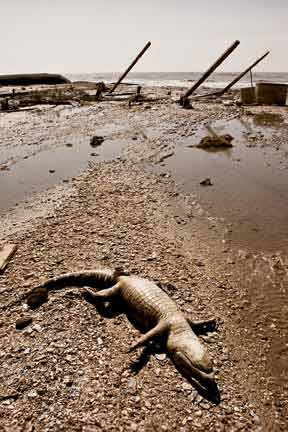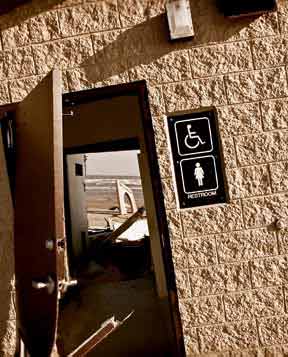
Facing Ike
The fury and aftermath of a monster storm.
By Earl Nottingham
In the late hours of September 12, 2008, I performed a nearly flawless Geraldo Rivera impression, leaning my body into the 100-mile-per-hour winds and stinging horizontal rain of Hurricane Ike’s eyewall as it hit the upper Texas coast. The performance ended abruptly, however, as a piece of corrugated tin flew in my direction, signaling that I might live longer inside.
Earlier that day, TPWD colleague Aaron Reed and I had traveled to the Trinity Bay area in advance of Ike to cover the inevitable search and rescue efforts of state game wardens and to document the ecological impact of the storm. Our base for several days was to be the Chambers County Law Enforcement Center in Anahuac where, comforted with the knowledge that the building was supposedly “hurricane proof,” we set up cots in the office of the local justice of the peace.
After drying off from my outside adventure, I retreated to the security of my warm sleeping bag and tried to sleep as the storm churned outside. And somewhere just down the road, the wind and a massive tidal surge had joined together to create a tempest that would be at work throughout the night erasing life, property and part of the Texas coast.
As dawn broke, the light revealed only a hint of what we were to witness over the next few days. Across the street, ancient oaks that had surrounded the historic courthouse were now in torn and twisted shreds and downed utility poles with snapped power lines crisscrossed the streets. With winds still at tropical-storm strength we ventured out, at first helping to clear roadways of fallen trees and assisting where needed. With no phone connections, first-responders were blind to who was in trouble, or how to get to them. Gradually, messages did start getting through: “Bolivar gone,” “Oak Island gone,” “High Island stranded,” and on and on.
We were going to be very busy for a while.
Here are some photos of Hurricane Ike's aftermath:















